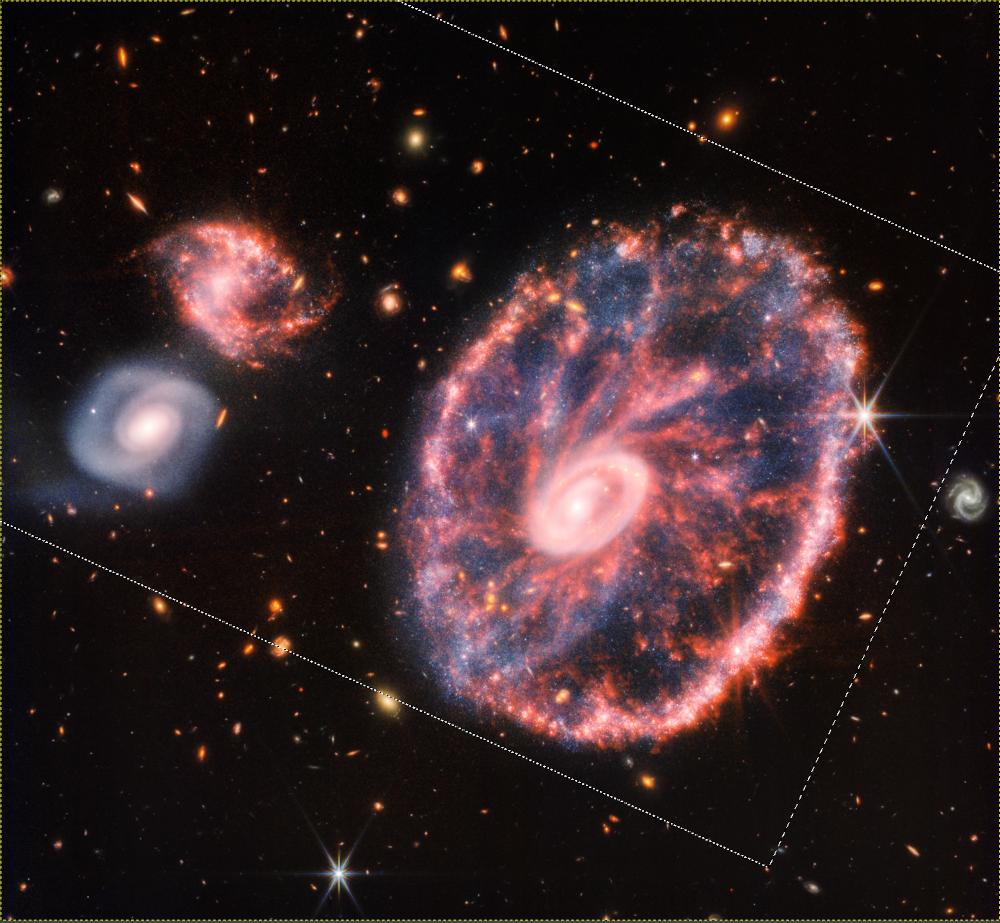I did a SIMBAD search around the coordinates of the Cartwheel Galaxy and found multiple X-ray sources, reported in Gao et al. (2003) and Wolter & Trinchieri (2004):
The ones you've boxed are likely background active galactic nuclei (AGN); supermassive black holes accreting gas which is then heated to $\sim 10^6\,\mathrm{K}$, thereby emitting X-rays. The one in the green box indeed doesn't have any optical/infrared counterpart; it is listed in both references as "J003743.1-334142/3" (referring to the coordinates), but not discussed. With an X-ray count rate of 0.23 ± 0.07 per kilosecond, it's not very bright. It could perhaps be a particular dusty AGN, but I don't know.
But you also see several X-ray sources along the "rim" of the Cartwheel. Those might be X-ray binaries: Binary stellar systems where one companion is a compact stellar remnant — a neutron star or a black hole — accreting mass from the other companion. A large fraction of the mass energy of the accreted gas is released as X-rays.
The authors also mention supernova remnants as a possibility, and argue that, if they're X-ray binaries, they must be high-mass X-ray binaries, not low-mass.
The Cartwheel Galaxy has its peculiar shape from a relatively recent drive-by of a galaxy 3 arcminutes northeast of this field of view (usually called "G3"). This event has initiated star formation which has lit up the rim and spawned massive stars, consistent with the presence of several X-ray binaries.


